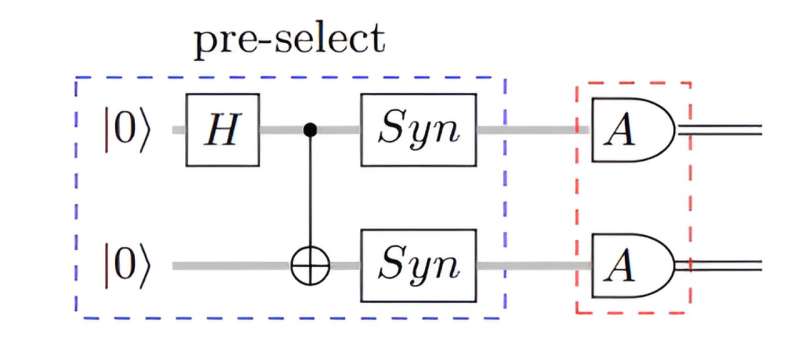April 5, 2024 report
This article has been reviewed according to Science X's editorial process and policies. Editors have highlighted the following attributes while ensuring the content's credibility:
fact-checked
preprint
trusted source
proofread
Quantinuum quantum computer using Microsoft's 'logical quantum bits' runs 14,000 experiments with no errors

A team of computer engineers from quantum computer maker Quantinuum, working with computer scientists from Microsoft, has found a way to greatly reduce errors when running experiments on a quantum computer. The combined group has published a paper describing their work and results on the arXiv preprint server.
Computer scientists have been working for several years to build a truly useful quantum computer that could achieve quantum supremacy. Research has come a long way, most of which has involved adding more qubits.
But such research has been held up by one main problem—quantum computers make a lot of errors. To overcome this problem, researchers have been looking for ways to reduce the number of errors or to correct those that are made before results are produced.
One of the companies working on reducing errors is Microsoft, and their chief focus has been on designing and using logical quantum bits through what they describe as "active syndrome extraction"—where a few logical qubits are created using multiple physical qubits. The system as a whole is described by the team as a qubit virtualization system.
In this new effort, Microsoft teamed up with Quantinuum, a company in the quantum computer hardware business. Quantinuum supplied the H2 computer (based on ion-trap qubits) and Microsoft added the logical qubit software. Together, they used 30 physical qubits to create four logical qubits.
The software diagnoses errors and corrects them while calculations are underway without destroying the logical qubits via its active syndrome extraction technique. The technique involves learning details about the qubits regarding noise, rather than measuring them.
Together, the research team tested their approach by running 14,000 experiments on the H2. They found it completed all of them without producing a single detectable error. Further testing showed that the system had an error rate of 1 in 100,000, which is approximately 800 times better than the achievement of the same quantum computer without the logical qubits from Microsoft.
After the testing was completed, Microsoft argued that the team had created a Level 2 quantum computer, which is one that has a reasonably low error rate and can be scaled up.
More information: M. P. da Silva et al, Demonstration of logical qubits and repeated error correction with better-than-physical error rates, arXiv (2024). DOI: 10.48550/arxiv.2404.02280
blogs.microsoft.com/blog/2024/ … han-physical-qubits/
cloudblogs.microsoft.com/quant … e-quantum-computing/
www.quantinuum.com/news/quanti … n-of-reliable-qubits
Journal information: arXiv
© 2024 Science X Network


















